Maligne Lake
July 25 , 2008
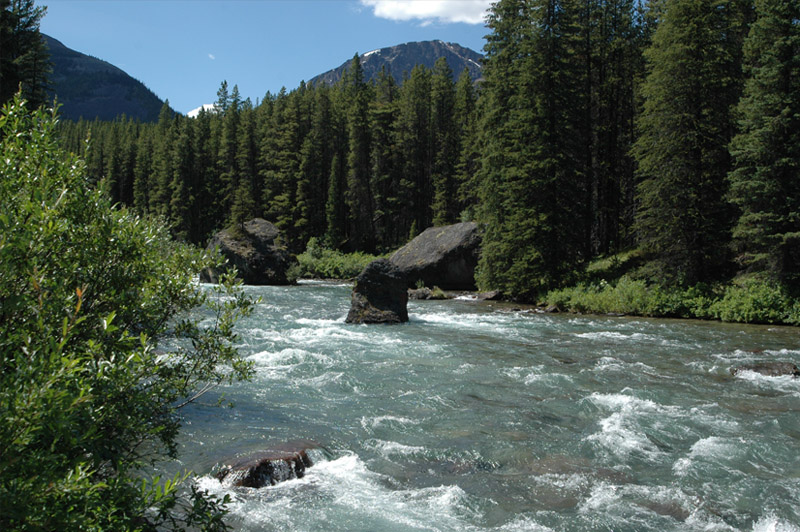
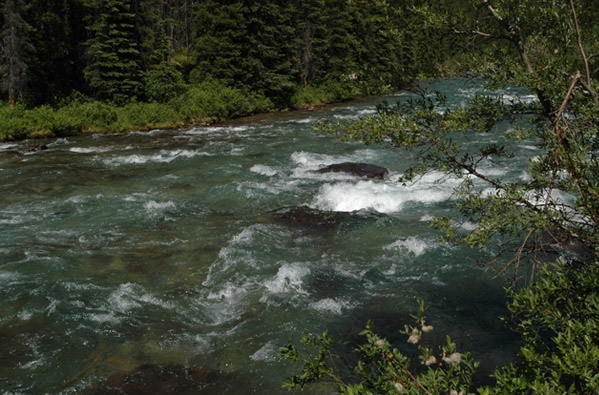 |
The Maligne Lake Road was an incredibly beautiful road, a great trip even if you just drove it and turned around and drove back. On this section past Medicine Lake, we traveled a good bit of the time along the Maligne River. It certainly is a beautiful river, not living up to its name which means "evil river". But then, we are not trying to get pack horses and all our supplies across it at flood stage like the person who named it. |
We finally reached Maligne Lake and stopped for a while at the point where the Maligne River rushes out of it. It was crystal clear and beautiful. This is probably the most popular of all the lakes in the region for boating and fishing. We saw a lot of canoes, kayaks, and fishing boats. |
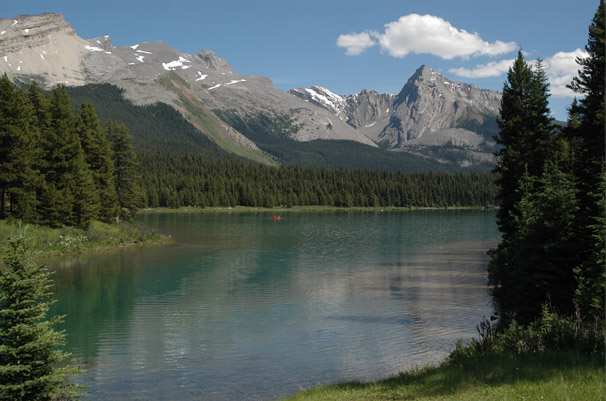 |
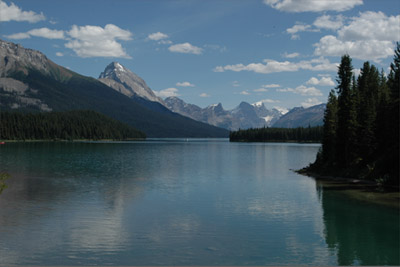 |
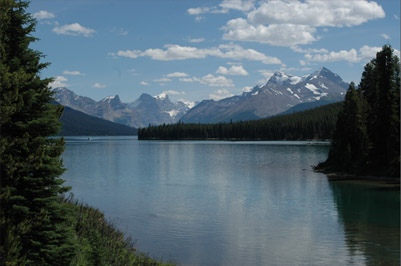 |
We made our way down to the lakeside and had lunch in view of the beautiful blue lake with its ring of mountains. The two views above from different perspectives give an impression of the expanse of rocky mountains at the east end of the lake. There were quite a few snow patches remaining on the mountains here.
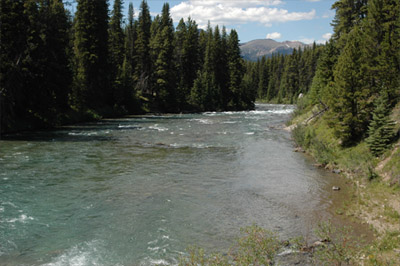 |
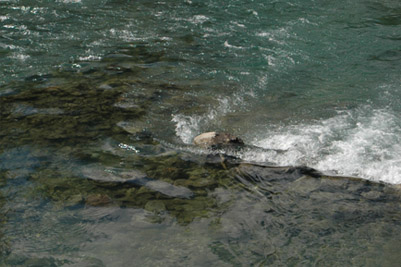 |
Above left is the Maligne River flowing out of Maligne Lake. There was a hint of the glacial blue color, but it appeared crystal clear and beautiful.
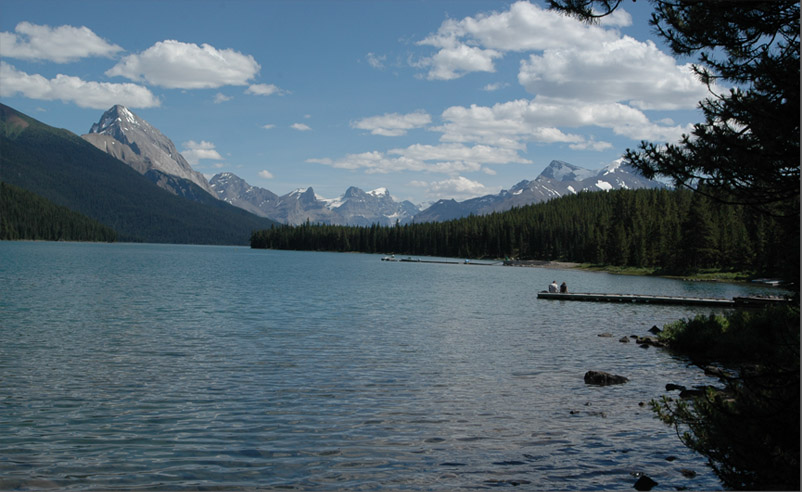
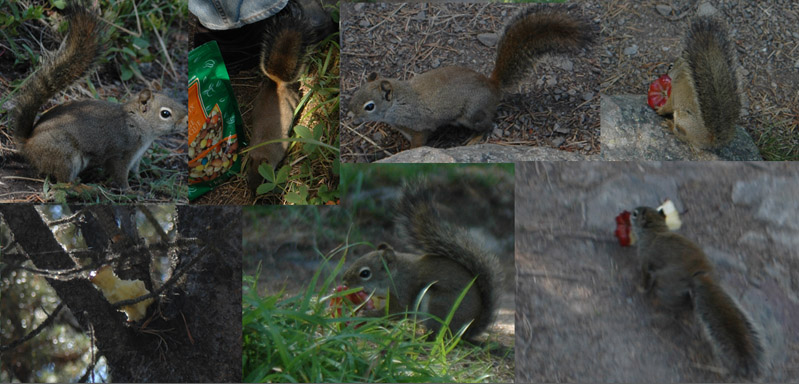
We enjoyed our lunch in this spectacular setting and enjoyed an enterprising small squirrel who sneaked by my foot and was almost into our bag of trail mix before I noticed him. The sequence proceeds clockwise from upper left. When we dropped an apple core he pounced on it and carried it up the hill behind us. A young Hispanic couple with a young boy came along and enjoyed taking pictures of the squirrel. The squirrel grabbed the apple core and carried it up a small tree and lodged it in a branch and came down looking for more snacks.
As we were driving around toward the gift shop, we came upon an deer grazing beside the road. We slowed down for me to take a picture of it, and it was quite unconcerned. At that time five motorcycles approached from the other direction, so we waited to see the response of the deer. He totally ignored the motorcycles, to our surprise. The animals in this national park have seen a lot of people. The antlers look like a caribou, so I'm not sure: deer or caribou? 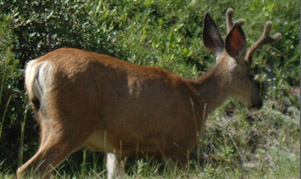 |
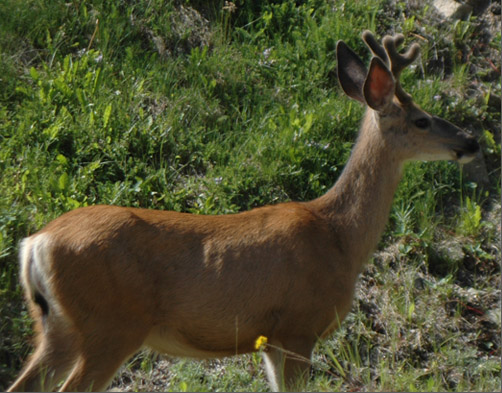 |
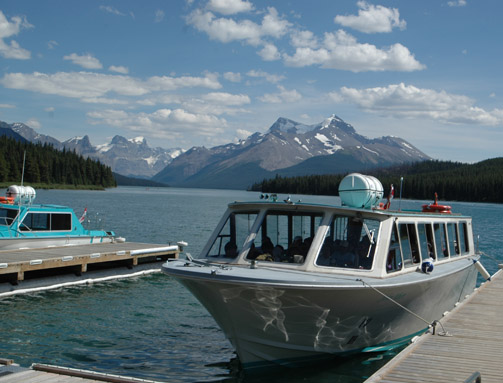 |
Having seen the excursion boats coming and going, we decided to take the tour up the lake. It went about 14 km up the lake. We were the last two passengers out of forty to get on and headed up the lake. Most of the passengers were Asian, but there were four Dutch women and a sprinkling of US and Canadian passengers. I couldn't get to a window to take pictures, so spent most of my time out on the back deck.  |
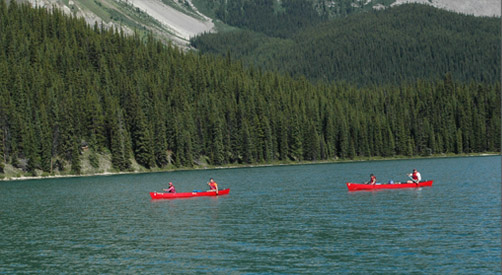 |
Brenda heard more of the story of the lake from the tour guide inside. The guide told of the history of visiting the lake. The excursions have been running on the lake for 80 years she told us. In her safety spiel she quipped that no one ever drowned in this lake, the hypothermia got you first. She said the temperature was about 4C or 39F all year because it was glacier fed. Even in warmer weather, there is more glacial melt, so it keeps the temperature about the same. That is the temperature at which water is most dense, so it makes sense that the body of the lake would stay at this temperature. |
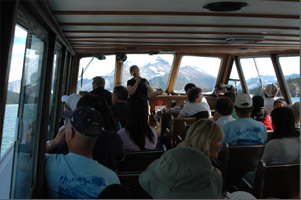 As we headed down the lake we had beautiful mountains on both sides. We enjoyed the young people who worked in the park service during the summer. Our boat captain was actually from Brunswick, Georgia and we could imagine him having grown up around the shrimp boats of that area. This lake was quite different! |
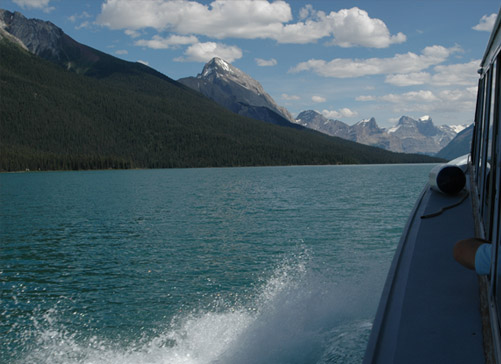 |
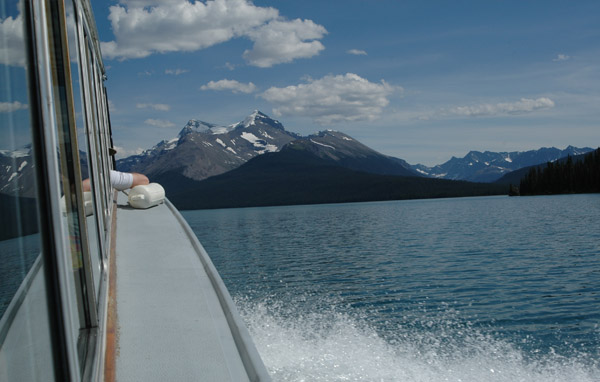 | The mountains on the right of the boat were quite different, and it was explained to us that they were of a different composition. 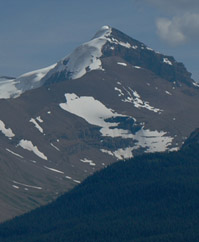 |
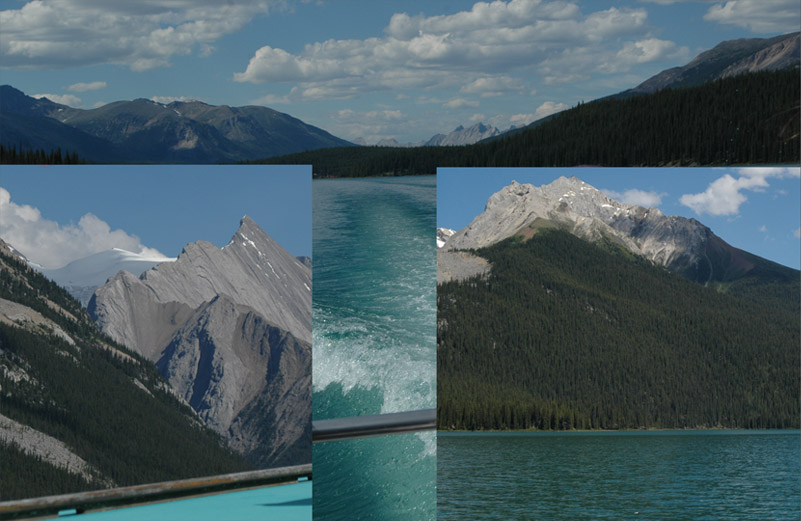
Further down the lake, we had a long view backward to the dock we left from. The insets on this photo show our views ahead on the left and the right, showing the difference between the types of mountains there.
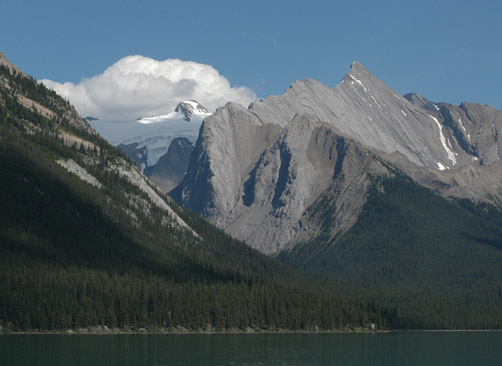 | My first impression of the knife-thin rock ridge on the left shore was that it was like the ridge we hiked in near Snowden in Wales. There they called it a glacial arrete. The mountains on the right shown in the photo below tended to be more rounded, as if created by more gradual erosion. 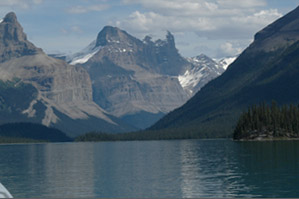 |
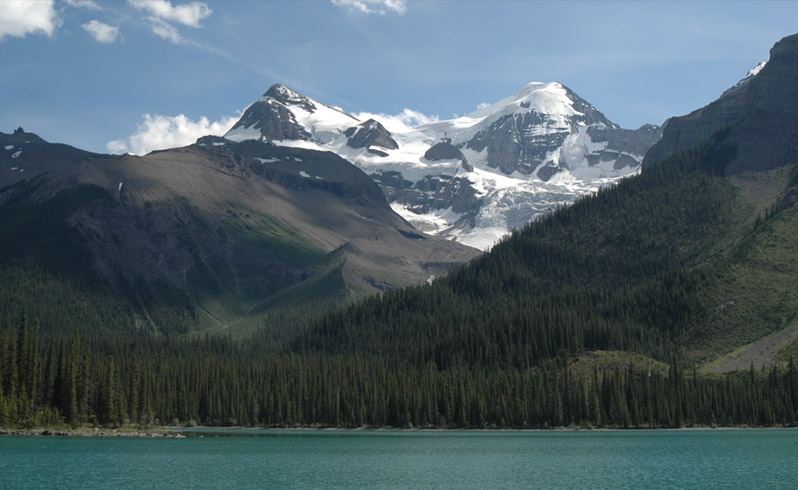
| To Distant End of Maligne Lake |
2008